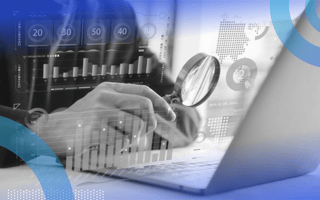The idea of automating governance, risk and compliance processes to streamline auditing is not exactly new. For some time, many auditing firms have used automation solutions — typically ones they build in-house — to help automate workflows associated with assessing audit evidence and communicating with stakeholders.
GRC tools like these bring some level of efficiency to auditing. But on their own, they only go so far in bringing speed, efficiency and risk reduction to complex auditing processes.
By closing the gaps in traditional security and compliance automation, GRC tools can streamline workflows for organizations and their auditors in new, powerful ways.
This article explains what a modern approach to GRC automation looks like and how auditors can benefit from it.
Why You Should Automate Your Security and Compliance Processes
- To stay on top of system updates, reducing the risk of data leaks.
- To prevent losing data from any unnoticed leaks.
- To test the security in your operating systems more often than manually feasible.
- To keep your anti-malware technology up to date.
Shortcomings of Auditing Security and Compliance Automation
In the past, auditing companies’ efforts to streamline the auditing process using automation tooling focused largely on centralizing data collection and communication.
But the efficiency that traditional GRC automation software offers typically ends there. It overlooks other aspects of the auditing process that can be tedious, time-consuming and prone to errors, such as the following.
- Traditional solutions often require staff members to log into different systems or dig deep inside user interfaces to find data submitted by customers. Even if the data is stored in one central platform, it’s difficult for auditors to find all the data submitted in response to a large volume of requests.
- The process of submitting data is typically manual on the customer’s side. Automating the request doesn’t translate to automating request fulfillment.
- There is no way to confirm automatically that the data supplied by a customer aligns with what an auditor actually requested.
- Data that customers submit often cannot be associated with a specific compliance requirement automatically. Auditors have to generate these mappings manually.
As a result of shortcomings like these, conventional security and compliance automation solutions in the auditing industry don’t actually minimize the amount of time and manual effort, on the part of both auditors and customers, necessary to complete audits.
These solutions also make it difficult to implement totally standardized approaches to automated auditing that work across multiple businesses, regardless of the types of compliance frameworks they need to support or the data they submit.
These challenges translate to higher costs and a higher level of risk for auditors. The more manual work necessary to complete an audit, the higher the staffing resources it requires and the greater the risk of errors due to human oversight.
How to Enhance Auditing Automation
Employ Workflows That Collect Data Automatically
The solution starts with implementing workflows that pull data from customers’ source of truth systems automatically, rather than requiring manual fulfillment of every request.
This means deploying data collection software that can gather information from the databases, applications and platforms where compliance-relevant data resides naturally. For example: electronic health record systems, customer relations management software or information technology logging tools that record information related to security.
Although customers may still need to supply some data manually, this type of automation can dramatically reduce the time, effort and risk associated with data collection. By extension, automated data collection speeds up the compliance process and reduces the burden on organizations to demonstrate compliance.
On top of this, automated data collection helps avoid gaps or oversights, such as forgetting to collect certain types of data. In this way, automation helps enable more reliable and accurate compliance reporting.
Use Automation for Data Classification
Data collection is not the only place where automation can improve compliance. Auditors can also use automation that streamlines the evidencing of core operational components of compliance frameworks.
This means automatically analyzing the data to determine which specific compliance rules it supports, eliminating the need for staff to locate data manually when assessing whether customers meet their requirements. The result is a faster and more efficient compliance process coupled with a lower risk of oversights, incomplete data or inaccuracies.
GRC automation capabilities allow auditors to collect the information they need, associate it with relevant compliance requirements and evaluate each customer’s compliance status as quickly and efficiently as possible.
This is what next-level security and compliance automation looks like. It builds upon traditional automation solutions by adding powerful new features that extend far beyond the automation of basic workflows like initiating requests.





